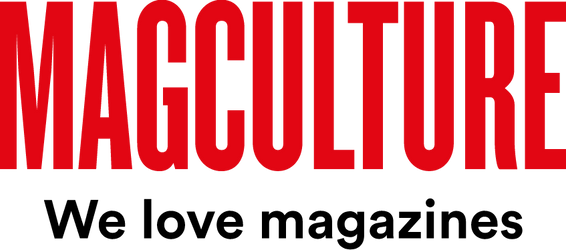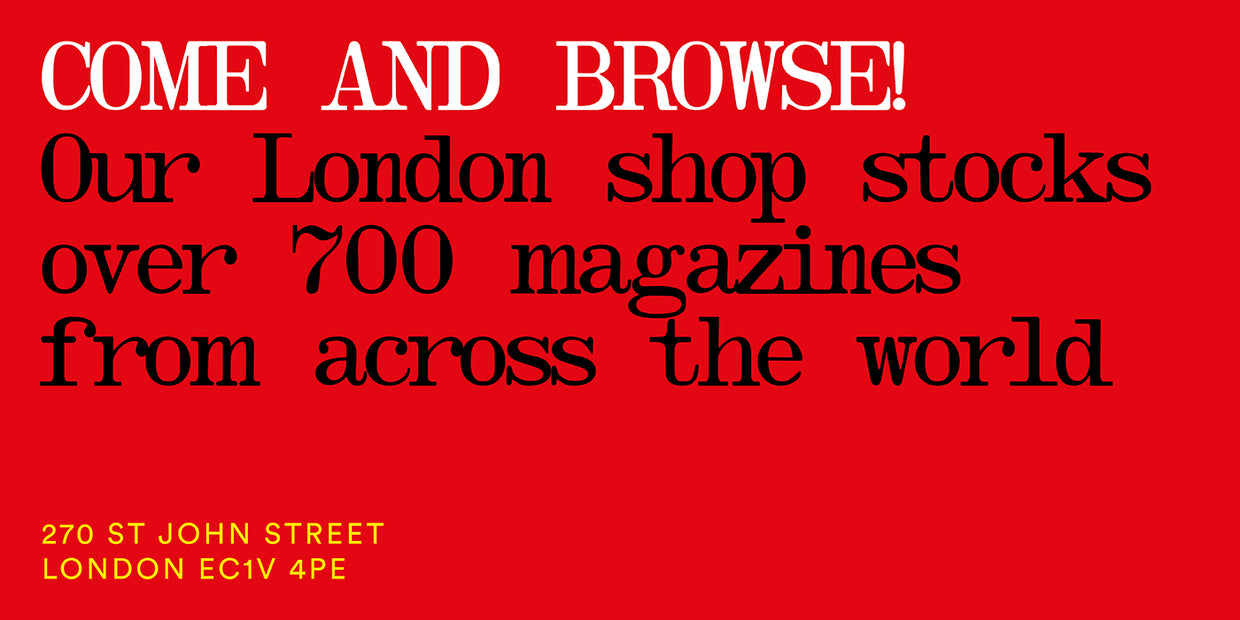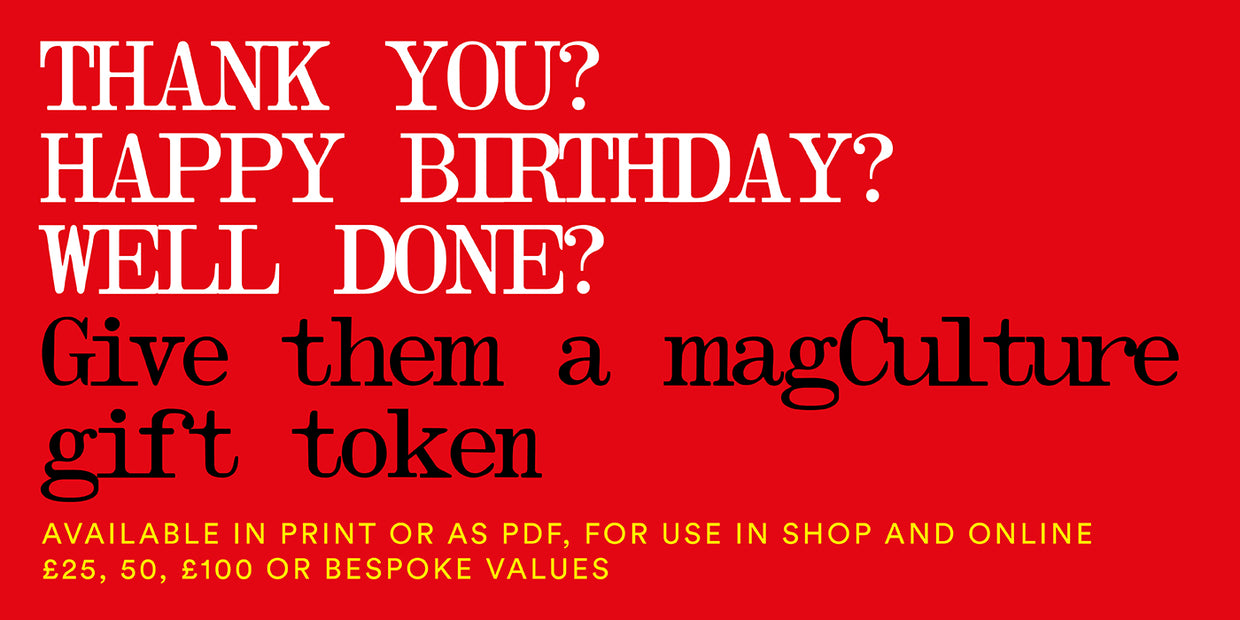
Three days in New York

Earlier this year D&AD invited me to programme and chair a panel discussion about magazines in New York as part of their campaign to globalise their annual Awards. The subject was the difference between US and UK magazine design. I was out there for three days and as well as the event itself had time to catch up with friends and ex-colleagues and to visit a number of magazine-related places.
First stop: MoMA, where two items stood out (aside from the vast collection of 20th century art. Are there any Picassos left for anyone else?). First was Paul Noble’s wallpaper designs for Nest magazine, intricate line illustrations in grey, a reminder of the extravagance that magazine enjoyed before its closure. Second was ‘Without Words’, a project by Hans-Peter Feldman. An entire issue of Austrian magazine Profil was reprinted with every word removed. A series of gridless white spaces with photos floating was all that was left, like a printer’s test. The normal edition of Profil was a quite unremarkable magazine but Feldman’s reprint was a great experiment that made you question the relationship between pictures and text. Even though the images were dull stock material Feldman’s revised version gave them great importance.
Next stop was the Mega Zines show at the Visionaire Gallery (11 Mercer St, SoHo). I expected this to be small but interesting and it turned out to be large and even more interesting. The space is crammed with magazines ranging from famous classics from the fifties and sixties (Show, Flair, Avant Garde) to the best independents of today. These included Me, i-D, 032c, Marmalade and to my pleasure Carlos.




This exhibition is a fantastic display of what magazines can be when they are allowed to roam from the norm and is recommended if you are in NY in the near future. Best thing is the magazines aren’t in cases and are all available for reading (and buying – my credit card took a thumping). The organisers are planning a book to accompany Mega Zines as it tours Europe next year, details when I have them.
Next morning was spent at the Universal News store on Broadway nr Spring St. The biggest magazine store I know, it carries just about every US magazine plus a strong selection from other countries. Useful research for both the D&AD event and for the We Love Magazines book.
Roger Black was charming when I visited his studio on 5th Avenue the next day. He seems as busy as ever (a redesign of the movie business title Box Office, and a new launch called Rove), although the new set up – himself and two young assistants – was at first look on a different scale to what I expected. Turns out he also has a 60-strong studio in Mexico City. I don’t think anybody else has made such a success of running editorial design as a business. Good to hear him being so optimistic about the future of magazines.
Then it was time to move on to FIT and the D&AD Print & Editorial Forum. FIT is a college so the building and decoration were institutional which lent the evening a school lecture feeling. As Becky from D&AD pointed out, this was very different to the usual slick agency offices they get to use for their London events. Drinks and canapés helped the wait for the audience to arrive and the evening passed very smoothly, the one minor problem being that the bottle openers being used by the barman kept breaking as he tried to open beers. I saw him get through three.
As chair I introduced the speakers, then got to sit back and enjoy four very good and very different presentations, which I briefly describe below. Briefly, because I managed to lose the notes I made during the talks. Blame the jetlag.
Peter Buchanan-Smith spoke first, telling the story of how he came to be designing Paper and Isaacs Book. Having grown up in Britain before moving to Canada and the New York he regards himself as an outsider in NY and Paper as a home for fellow outsiders. The front covers from Paper he showed were great, maintaining the magazine’s tradition of changing its logo design every issue. Later there were some stunning, if unexplained, images from Isaacs Book.
Josh Liberson was next, demonstrating a healthy mix of experience and wit as he described his company Helicopter’s approach to magazine design, explaining that it accounted for about half his business (the other half being gallery catalogues, CD sleeves and, if the tourists who find their number in the directory had their way, Helicopter tours of Manhattan). While he and partner Ethan Trask are proud of their bespoke approach to every editorial project, that approach can confuse some clients. They want to be able to quickly assess what style a designer works in and so know what to expect if they work them. This doesn’t stop them getting work, though. Josh showed some background work done over a year developing Domino for Conde Nast, designs from the first issue of a redesigned Car and Driver, and web pages from their redesign of Slate.com.Three very different projects, all strong.
Suzanne Sykes stood up next to show her designs for Grazia. If you’ve been reading this blog a while you’ll already know I love the magazine, but this was the first time I’d seen Suzanne talk through the project and the pages looked fabulous blown up on the screen. In a women’s magazine world of ‘The Devil Wears Prada’ -type characters Suzanne is a down-to-earth talker who explained the design approach well, describing the need for fun and teamwork on a weekly. The magazine looks simple to put together but as Suzanne explained the layering effect is a complex one that takes a while for any designer to grasp when they work on the title.
Lastly, Chris Dixon spoke about the reinvention of New York magazine. I’ve seen the titles' Design Director Luke Hayman talk about the project, and hearing Chris talk made clear just what a strong team they have working on the title. This magazine is simply one of the best examples of editorial design at this time. The design vision is capable of dealing with almost anything, the design team can use photography, illustration and typography as they wish yet maintain a singular identity. Fantastic stuff.
The evening ended with questions from the audience. A slow start but once a few questions got asked more followed. I had to balance offering my opinions with prodding the guest speakers for theirs, which I hope I managed OK. As is perhaps always the case with these kind of events, a simple answer to the question in hand proved elusive but we did begin to scratch the surface, with some good questions being asked about the two countries and their publishing cultures. It was impossible to note the details of the exchanges, ideally D&AD would have recorded the conversations, but my lasting impression was that the two sides of the Atlantic were closer than ever. Aside from obvious commercial aspects (the British envy the higher budgets available in the US, the Americans envy the relative freedom given by the smaller scale of the UK industry), the difference between the US and UK is much smaller than the difference between editorial design and other areas of graphic design. Editorial design is an increasingly international language.
Michael Surtees has posted some pictures and a review of the event on his blog.
Next day I visited Galaghers second-hand magazine store at 126 E12th Street. This maze-like basement has long been on my list of must-dos and it didn’t disappoint. This picture shows the scale of what it has to offer and the difficulty of finding what you want.

It concentrates on fashion magazines of all eras but also has a lot of mainstream US titles like GQ and Esquire and vast piles of specialist 50s and 60s titles. I asked the manager what the most asked-for titles are and of the top three, two are predictably Twen and the original Nova. But the third was surprising, an eighties French fashion title called Jill that I only vaguely remember. Looking at an issue, I think its popularity amongst New York’s fashion world is due to its photography – the design was pretty anonymous. I didn’t bother to buy a copy.
So that was New York. A busy few days, an enjoyable discussion and a suitcase full of magazines.


